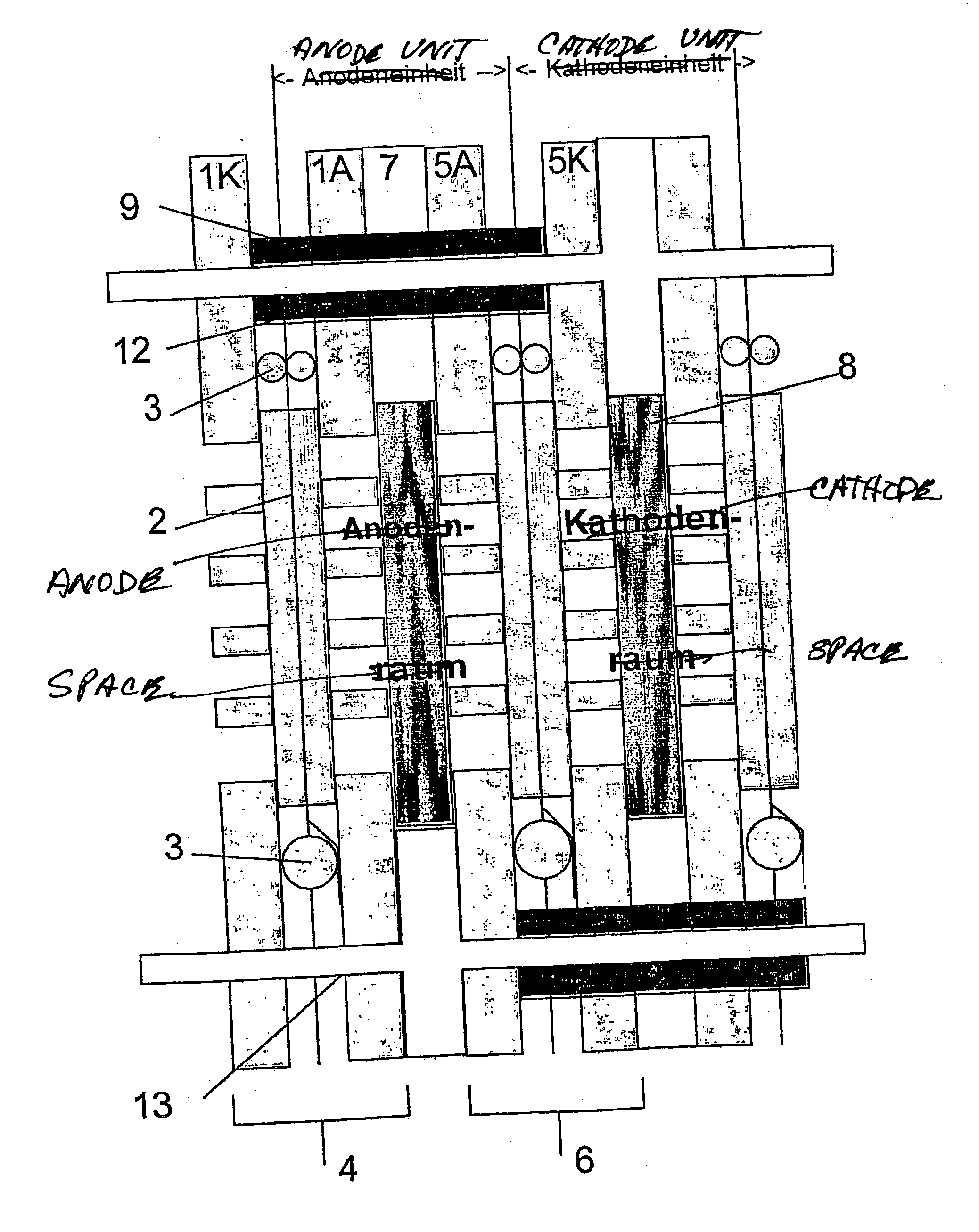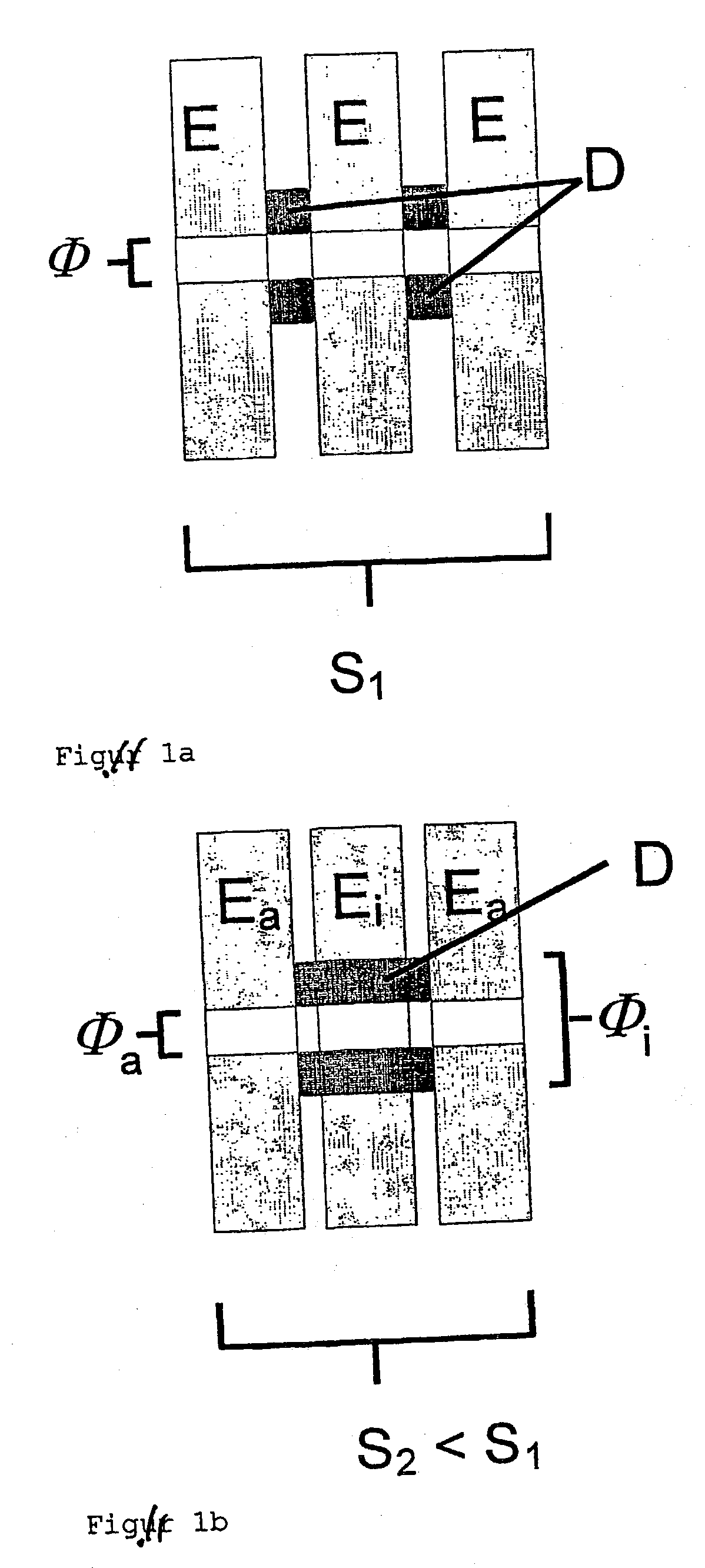Fuel cell stack
- Summary
- Abstract
- Description
- Claims
- Application Information
AI Technical Summary
Benefits of technology
Problems solved by technology
Method used
Image
Examples
first embodiment
[0040] FIGS. 3a through 3c show in a first embodiment the construction of a fuel cell stack according to the invention from individual elements. The membrane-electrode units (MEAs) 2 are premounted in cartridges 4, 6. The electrical insulation of the cartridge plates 1 to 5 are effected over an MEA flat seal 3. The cartridges 4, 6 are so arranged in the stack that if two cartridges are in contact over a common anode compartment or cathode compartment. The anode compartment or the cathode compartment between two cartridges 4, 6 or one compartment 4, 6 and an end plate 10, 11 is formed by a cutout 7b in the flat seal 7. The flow distribution within the medium compartments and the tightening of the MEA can be realized by nonconducting inserts 8.
[0041] The insert 8 is a plastic fabric. The cartridge plate 1 and 5 connect via bores 1a, 1b, 5c, 5d into operating medium ducts. The bores 1a, 5c are smaller than the bores 1b, 5d.
[0042] The sealing of the medium ducts form, for example, one a...
second embodiment
[0043] FIGS. 4a through 4c show in a second embodiment the construction of a fuel cell stack of the invention from individual elements. In contrast to the fuel cell stack shown in FIG. 3, the individual cartridges 4 and 6 have in this embodiment in their individual elements 1 and 5 only 2 each of through openings. The through openings for the oxidizing medium passage are omitted. Further, instead of flat seal 7 with inserts provided in the recesses 7b of plastic fabric, partial flat seals 7 (8) are provided which now are completely comprised of the fabric 8 and have through openings for the fuel passage as well as for the lugs 5a.
[0044] Instead of a continuous oxidizing agent passage, the oxidizing agent in this embodiment flows directly from the edges of the flat seal 7 (8) into the corresponding cathode compartment. The oxidizing agent is then conducted via blowers into the fabric 7 (8). For small powers it suffices to provide a fabric 7 (8) of a thickness of 2 to 4 mm without a b...
PUM
 Login to View More
Login to View More Abstract
Description
Claims
Application Information
 Login to View More
Login to View More - R&D
- Intellectual Property
- Life Sciences
- Materials
- Tech Scout
- Unparalleled Data Quality
- Higher Quality Content
- 60% Fewer Hallucinations
Browse by: Latest US Patents, China's latest patents, Technical Efficacy Thesaurus, Application Domain, Technology Topic, Popular Technical Reports.
© 2025 PatSnap. All rights reserved.Legal|Privacy policy|Modern Slavery Act Transparency Statement|Sitemap|About US| Contact US: help@patsnap.com



